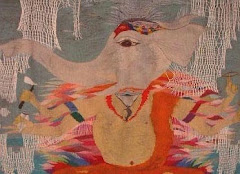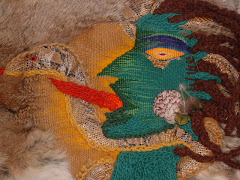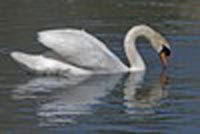Chapter Four
Kerala, India.
Two days after the disaster, in the worst-hit village on the peninsula, monks from Amma’s ashram and villagers—including members of rival political groups—help collect and stack wood for funeral pyres; and then they prepare and lay the dead into wooden coffins. Several women, searching for their drowned babies, rush to a coffin where an infant lies wrapped in white, with beach sand stuck on partially closed eyes. At sundown, monks, following Hindu tradition, preside over the mass cremation for forty-two dead, and then sit vigil with the bereaved throughout the night as the pyres burn.
Two days after the disaster, in the worst-hit village on the peninsula, monks from Amma’s ashram and villagers—including members of rival political groups—help collect and stack wood for funeral pyres; and then they prepare and lay the dead into wooden coffins. Several women, searching for their drowned babies, rush to a coffin where an infant lies wrapped in white, with beach sand stuck on partially closed eyes. At sundown, monks, following Hindu tradition, preside over the mass cremation for forty-two dead, and then sit vigil with the bereaved throughout the night as the pyres burn.
Experiencing the death of a loved one is one of the most difficult events, often transformational. For this reason, many cultures prescribe several rites for the dead that take place over a year’s time and sometimes longer.
In tsunami-ravaged countries, many of the dead received funeral rites; many did not; some long after the fact. In southern Sri Lanka, the chief priest of a Buddhist temple, said: "We did what we could…The grief was immense, especially at the loss of children and mothers.” The Buddhist priest led funeral rites in the main hall of the temple where the bodies were honored before being buried in family plots. Hindus cremated their dead. Thousands of bodies were not recovered.
In Thailand, nearly two years after the tsunami, Muslim and Roman Catholic priests, and Buddhist monks joined together in an inter-religious burial ceremony for last of the unidentified bodies. During the ceremony, through a preserved DNA sample, a woman who found her aunt, said, “The feeling of happiness or sadness now is equal, as I have been waiting for my aunt’s body for almost two years.”
In Banda Aceh, Indonesia, after the wave flooded the land, it looked as though a bomb had been dropped. Over 200,000 died and thousands were lost to the sea. Some mass burials took place without funeral rites.
Funeral Rites
Funeral rites allow the bereaved to live into their grief. At the same time these rituals assist the deceased toward the journey beyond life. To prepare for a Hindu cremation, family members wash the body, dress it in a clean cloth, lay the corpse into the wooden coffin, and then place the coffin on the pyre. Usually the eldest son or remaining male member of the family, will ignite the flames.
The fire encourages the departed soul to move on, to give up attachment to the body, and not to linger, disembodied, with the living. The fire has a similar effect on those who mourn, allowing them to take the first steps toward releasing the loved one. The cremation rite is followed by an eleven-day or fifteen-day mourning period that ends with a ceremony, a right of absolution after which helps family members return to their normal lives.
In Buddhist funeral rites, sometimes the soul must be convinced that it is no longer a part of the mortal world, especially in the case of sudden death by accident such as the tsunami. In most ceremonies, for several days priests ring bells, chant religious texts, beat drums, and blow bass horns, and then the burial takes place.
In Tibetan Buddhism, a spiritual teacher or lama recites inspirational prayers and instructions from The Tibetan Book of the Dead. For forty-five consecutive days, the deceased is guided through difficult passages and presented with opportunities to recognize the true nature of Reality.
All the different funeral rites help encourage and guide the soul, unhindered, on its passage into the next world.
Knowing and understanding the inevitability of death, one should strive hard to realize the eternal truth before the body falls off… Only a person who leads a moment-to-moment life can be completely free from fear. He alone can embrace death peacefully.
—Amma
Philosophy of Living and Dying
Most Hindus and Buddhists will be familiar with their respective philosophies regarding living and dying, and for the ways a person, throughout life, prepares for one’s final days. Sages all over the world have passed down the wisdom, that to be happy and feel free, it is recommended to remain unattached to the physical reality. To live in the world, to enjoy it fully, and yet at the same time not be bound by it. Ideally, through rites and teachings at each stage of life starting with birth itself, individuals gain an understanding of where they come from and where they are going.
Nevertheless, it is impossible to escape the profound grief experienced with the death of a loved one.
 Boy at funeral pyre
Boy at funeral pyreMass Cremation
Near Amma’s ashram in India, two nights after the tsunami, the cremation for the forty-two dead took place on the beach. With waves breaking in the distance, monks and nuns chanted from the eighth chapter of the Bhagavad Gita:
Near Amma’s ashram in India, two nights after the tsunami, the cremation for the forty-two dead took place on the beach. With waves breaking in the distance, monks and nuns chanted from the eighth chapter of the Bhagavad Gita:
Brahman is the Imperishable, the Supreme; the essential nature is called Self-knowledge…whosoever, leaving the body, goes forth remembering Me alone at the time of death, he attains My Being… Whosoever at the end leaves the body, thinking of any being, to that being only does he go…Therefore, at all times remember Me only…with the mind and intellect fixed in Me, you shall doubtless come to Me alone.
—excerpt from the eighth discourse
—excerpt from the eighth discourse
People listened to the scriptural passage, sitting in the sand, bathed in the ancient knowledge. They sat until dawn, watching the fires dwindle and the embers burn down to ash.
Credits:
Photos, courtesy of www.amritapuri.org
Amma and the Tsunami: Pray & Serve (San Ramon, CA, 2007)
Sri Lanka report: www.helptsunamisurvivors.org
Thailand report: www.iol.co.za
Credits:
Photos, courtesy of www.amritapuri.org
Amma and the Tsunami: Pray & Serve (San Ramon, CA, 2007)
Sri Lanka report: www.helptsunamisurvivors.org
Thailand report: www.iol.co.za








No comments:
Post a Comment